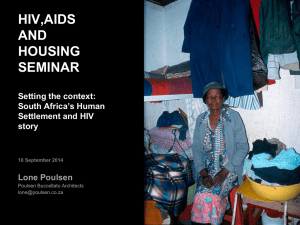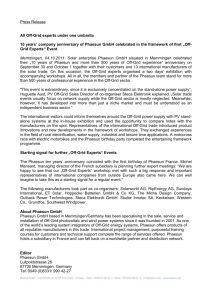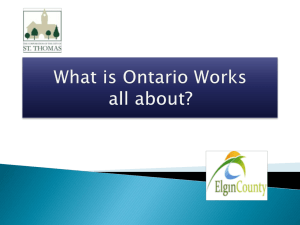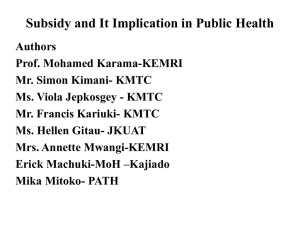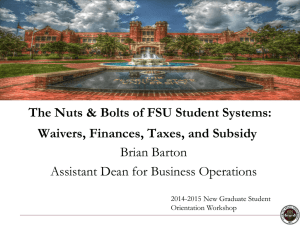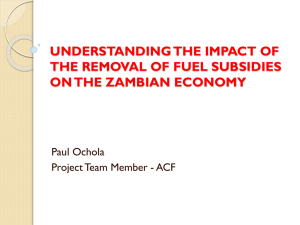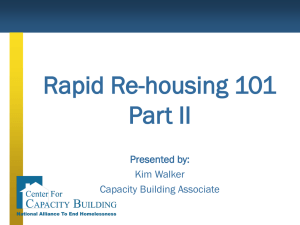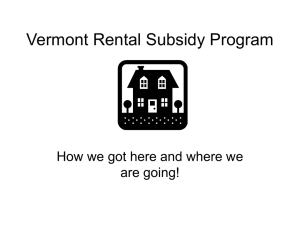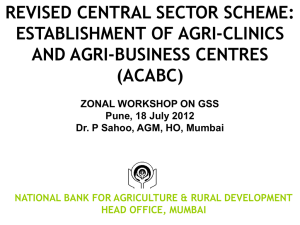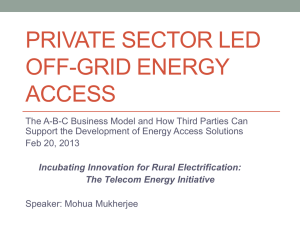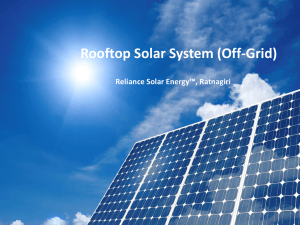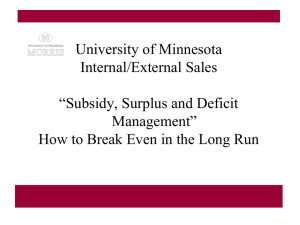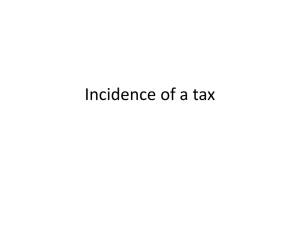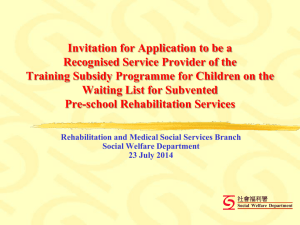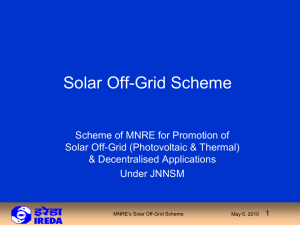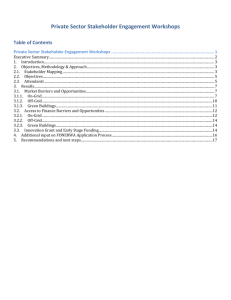A case study of off-grid solar PV in South Africa
advertisement
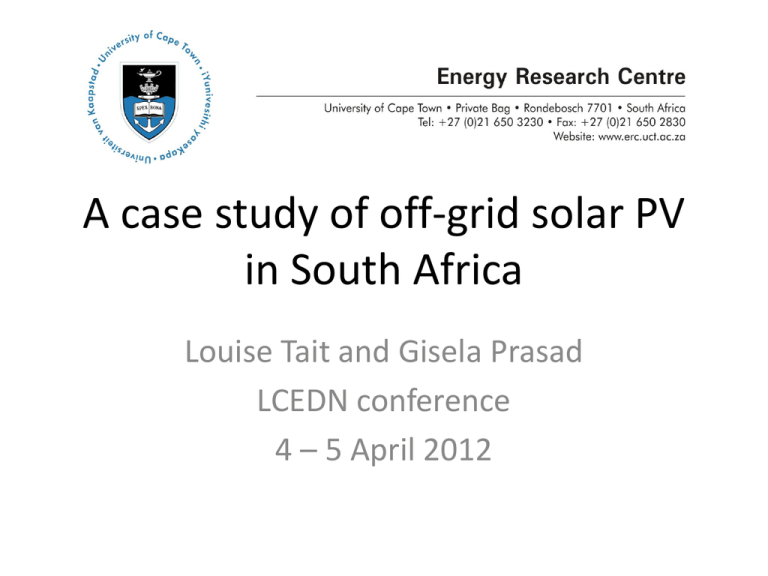
A case study of off-grid solar PV in South Africa Louise Tait and Gisela Prasad LCEDN conference 4 – 5 April 2012 SA’s electrification programme • Wide-scale national grid electrification programme postdemocracy to extend services to previously excluded population • To date approximately 5.2 million households have been electrified since 1994. Approximately 75% of the population have access to electricity. Most of the remaining un-electrified are in rural areas • But recent slowdown in connection rates – budgetary constraints, lack of bulk distribution infrastructure, unelectrifiable settlements, lack of capacity at municipal level • Connection and consumption subsidies – poor households receive 50kWh per month free SA’s off-grid solar programme • 1998 Gov adopted Off-Grid Solar Home System (SHS) Programme – to speed up access for remote and rural areas where extension of grid not feasible • Target was to electrify 300,000 households using solar PV • 50Wp panel and battery – 4 lights, small B&W TV, radio and small fan for a few hours each night • Concession model with private sector - six concession areas granted – 50,000 installations each SA’s off-grid solar programme • Government provided capital cost subsidy and operational subsidy to concessionaires • Fee-for-service model – households pay monthly fee for solar service (covers maintenance and battery replacement) • Concessionaires also to make provision for thermal needs of rural households – supplying cook stoves, LPG and paraffin in rural energy shops Delivery models of concessionaires • Capital cost subsidy from gov +- 80% of cost of system. Concessionaires must finance the rest themselves • In 2008 system cost around R5,600 ($740) and received gov subsidy of R4,060 ($535) • Customers pay upfront connection fee of R100 ($13) and monthly service fee of R61 ($8) – found to be unaffordable and government extended FBE subsidy to off-grid programme – paying R40 ($5) of service fee. • Payments collected through regional energy centres or using local ‘runners’ who collect from households • Systems have an ‘energy management unit’ – manages battery and credit, disconnects load when credit expired, uses data transfer tokens Policy problems • Programme has seen many delays and cutbacks in funding • In 2003 after awarding tenders, government drastically cuts back number of installations it will provide subsidy for • Delays in awarding new tenders for third phase – no new tenders awarded for 4 years from 2006 – 2010 • Department of Energy cite difficulties in identifying new areas • There appears to be a lack of political support to drive the programme • Payment of FBE subsidy to offgrid programme at discretion of local municipalities – payments irregular and sometimes non-existent Other challenges • Lack of integration with electrification planning – grid has extended into off-grid service areas, making SHS’s undesirable • Non-payment by customers – contributed to by irregular subsidy payments by municipalities and inflexible monthly charges • Perceptions and attitudes of customers towards solar – grid is preferred, solar service seen to be limited, fears that it will jeopardise chances of getting the grid • Rurality and lack of infrastructure – lack of roads, poor communications Current status of concessionaires • Currently a total of about 30,000 installations in place across the concession areas (compared to goal of 300,000) • In 2010 four concessionaires granted new tenders for a total of 10,500 installations • Many SHS removed due to grid expansion, vandalism, theft, non-payment etc. • Conducting maintenance only not viable business model and 2 went out of business. • The rest currently just breaking even – probably surviving as long as they have due to international funding Implications for delivery models • Capital and operational subsidies essential • Gov cutback and delays – negative impacts on order and stocks, staff retention, insurance, investor confidence, lost opportunities with investors and customers • Small installed base has not proved to be viable business model. Need to expand installations but policy caps and delays have prevented this. • Irregular FBE subsidy payments negatively impacts customer satisfaction and monthly payment rates Successes and weaknesses of the programme • Model does not reach poorer households • Public private partnership has not proved successful – gov has not delivered in the partnership and policy delays have stifled innovation and threatened business viability • Private sector shown remarkable staying power to deal with challenges – developing systems in rural areas with no infrastructure, policy delays • Off-grid does not offer substantial returns in the short term, takes particular private sector players with commitment and to show innovation • Going forward – need to integrate into electrification planning, government and concessionaires need to engage with municipalities over subsidy payments

